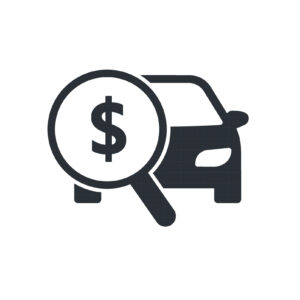A Closer Look at Unit Cost Variability in Used Vehicles
Since the dawn of the used car business, it’s been true that dealers make their money when they buy a car.
This enduring truth was the first bit of advice my Dad passed onto  me when I took over the used vehicle department at our Cadillac store outside Chicago. “It’s the money, honey,” he told me.
me when I took over the used vehicle department at our Cadillac store outside Chicago. “It’s the money, honey,” he told me.
One would think that this understanding of the importance of each used vehicle’s unit cost’s influence on each vehicle’s profit potential would translate to a sort of cardinal rule. That is, it’s imperative that everyone gets each unit’s cost right, at the moment the vehicle is appraised and acquired. Maybe the rule would trigger some kind of consequence when someone gets it wrong.
But that’s not how it works in many dealerships today. Consider some of these findings from separate studies of vAuto dealers’ appraisal-related performance in the past year:
41 percent of dealers allow default reconditioning estimates on over 80 percent of the vehicles they appraise and take in. Nearly 70 percent of dealers allow default estimates on at least 50 percent of the vehicles they appraise and acquire.
80 percent of appraisals include reconditioning estimate misses that average $1,600. The misses can be due to over- or under-estimating the actual cost of getting a vehicle retail-ready.
70 percent of the vehicles dealers hold in their inventory see at least four adjustments to individual ACVs during a vehicle’s time in inventory. There are a multitude of reasons someone might adjust an ACV after they own the vehicle, but a prominent reason for the adjustments goes back to reconditioning—the accuracy of the initial estimate as well as the timing of when recon-related invoices (i.e., dent removal, glass/tire repair, etc.) and ROs hit the books.
Now, let’s go back to the age-old rule that you make your money when you buy a car. I’d submit that when a dealership appraises and brings in a vehicle, the initial unit cost likely shapes the collective sense of the vehicle’s profit and retail potential. The unit cost also likely plays a role in establishing the retail pricing strategy for the vehicle.
If that’s the case, what should one make of the data points above that suggest how you buy the car doesn’t really reflect the true cost of many vehicles you acquire?
To me, the findings suggest a glaring need for dealers to tackle an issue that many are likely aware of but haven’t addressed with the force and intention that they should—capturing a more accurate and thorough understanding of each vehicle’s condition, which can lead to a more accurate and true estimates of what it’ll take to make a vehicle retail-ready, should you choose to keep it.
I would also add that a greater level of unit cost accuracy is even more essential in today’s market than it has been in the past. Dealers everywhere are sensing, if not directly seeing, that used vehicle profitability is once again under pressure. I don’t think anyone would disagree that if you don’t have an accurate and clear understanding of a vehicle’s cost on Day 1, you’ll have a far more difficult time achieving the profit or return on investment potential a vehicle could command and you might reasonably expect it should command.
To borrow a line from singer Billy Joel, “get it right the first time, that’s the main thing.”
